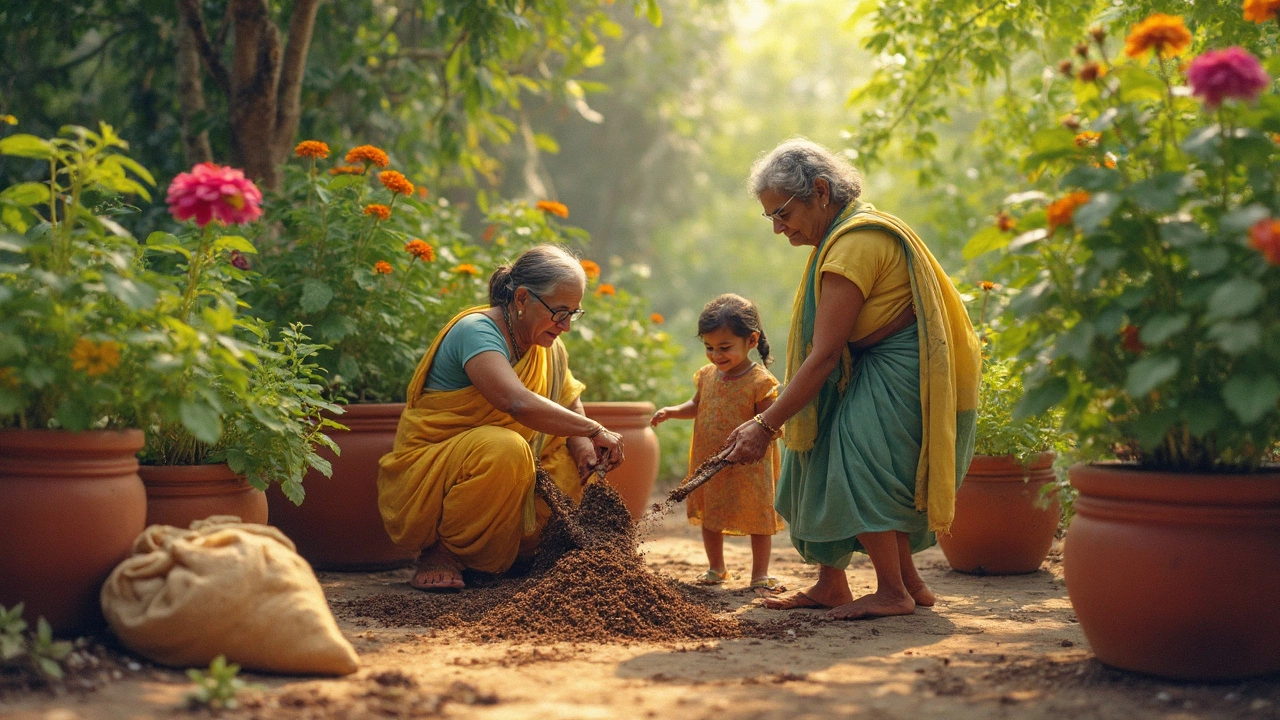Organic Fertilizer: Simple Tips for a Healthier Garden
If you want greener leaves, bigger veggies, and richer soil without chemicals, organic fertilizer is the answer. It works with the soil’s natural life, feeding plants the way nature intended. In India’s varied climates, the right organic mix can make a huge difference, whether you’re growing tomatoes in Delhi or orchids in Kerala.
Why Choose Organic Fertilizer?
Organic fertilizers release nutrients slowly, so plants get a steady supply instead of a quick burst that can burn roots. They improve soil structure, increase water‑holding capacity, and support beneficial microbes that protect against pests. Unlike synthetic blends, they’re made from locally available materials – cow dung, neem cake, compost, and rock phosphate – keeping costs low and sustainability high.
Another plus is safety. Kids, pets, and wildlife won’t be exposed to harmful residues, making organic options ideal for home gardens and small farms. Plus, many Indian states offer subsidies for organic inputs, so you can save money while going green.
How to Use Organic Fertilizer Effectively
Start with a soil test. Knowing your pH and nutrient gaps helps you pick the right blend. For most Indian soils, a balanced mix of nitrogen (N), phosphorus (P), and potassium (K) plus micronutrients works well. A popular combo is 2:1:1 compost‑rich manure mixed with bone meal for phosphorus and wood ash for potassium.
Apply organic fertilizer at planting time and again during the growing season. For beds, spread a 1‑2 cm layer over the soil and work it in gently. For potted plants, dissolve 1‑2 tablespoons of liquid compost in a litre of water and feed every two weeks. Remember, too much can attract pests, so stick to recommended rates.
Timing matters. Early monsoon is perfect for incorporating bulk organic matter because the rains help break it down. In dry regions, apply before the first irrigation so the nutrients travel with the water.
Combine organic fertilizer with mulch. A 3‑5 cm layer of straw or dried leaves locks moisture, reduces weed growth, and adds extra organic matter as it decomposes. This creates a win‑win for soil health and water conservation – a key point for sustainable gardening in India.
Keep an eye on plant response. Dark green, vigorous growth indicates good nutrition, while yellowing leaves may mean a nitrogen shortfall. Adjust by adding more nitrogen‑rich compost or green manure crops like sun hemp.
For raised beds or terrace farms, consider using bio‑char mixed with compost. Bio‑char holds nutrients and improves drainage, which is useful on compacted soils often found in urban balconies.
Lastly, rotate crops. Legumes such as beans or pigeon peas fix nitrogen, reducing the need for extra fertilizer the next season. This simple practice keeps the soil fertile year after year.
Organic fertilizer doesn’t just feed plants; it builds a living soil ecosystem that lasts. By choosing locally sourced, nutrient‑rich organic blends and applying them wisely, you’ll see stronger plants, better yields, and a garden you can be proud of.
Worm Castings: The Secret Weapon for Better Garden Soil
Worm castings, often called nature's best fertilizer, can transform tired soil into a thriving home for your plants. They’re packed with nutrients, improve the soil structure, and even help your garden fight off pests and diseases. This article breaks down how worm castings work, why they stand out from other soil improvers, and how you can use them for bigger, healthier harvests. You'll pick up practical tips and learn some surprising advantages that worm castings have over standard compost. Get ready to see your plants grow stronger with less effort.
About
Soil Improvement
Latest Posts

What Plant is India Famous For? Tea, Spices & More Icons Explained
By Alden Thorne Jul 2, 2025

Common Indoor Plant Care Mistakes You Should Avoid
By Alden Thorne Jan 3, 2025

Number One Natural Insect Repellent: The Truth About What Really Works
By Alden Thorne Jun 10, 2025

